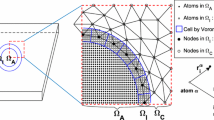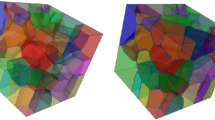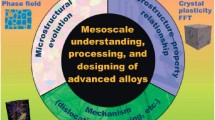Abstract
A standard crystalline lattice is characterized by periodicity and symmetries described by crystallographic groups. However, there exist strange alloys for which periodicity is violated by their own structure. They are characterized by a prominent influence at a gross level of atomic effects. We may classify three classes of aperiodic - or quasiperiodic - crystalline alloys: (i) The first class is the one of incommensurate modulated crystals (IMC) that can be obtained by primary periodic structures by ‘displacing’ ideal locations of atoms in a way in which the original period of the translational symmetry is incommensurate with respect to the ‘period’ of the modulation. (ii) Incommensurate intergrowth compounds (IIC called also composite crystals) are characterized by the presence of two or more (sub)lattices with periods mutually incommensurate. These sublattices shift reciprocally to try to match one another. (iii) Finally, quasicrystals are intrinsically quasiperiodic and satisfy symmetries forbidden by the classification of crystallographic groups: they may display five-fold, eight-fold, ten-fold symmetries. Let us think of a planar quasicrystal with pentagonal symmetry. From elementary geometry we know that we cannot fill the plane by using only pentagons. So that we are forced to insert here and there topological alterations - i.e. structures different from pentagons - called ‘worms’. Of course, the presence of worms alters periodicity. For all these classes, local rearrangements of atomic clusters occur within each crystalline cell. Such substructural rearrangements have influence on the gross mechanical behavior and the interactions power conjugated with them cannot be neglected. To describe substructural interactions, we follow the general format of multifield theories for complex bodies, so that we start by assigning to each material element a morphological descriptor of the substructural changes within the element itself and call such changes phason activity.
Access this chapter
Tax calculation will be finalised at checkout
Purchases are for personal use only
Similar content being viewed by others
References
Mariano, P. M., Mechanics of quasiperiodic alloys, submitted, 2005.
Mariano, P. M., Proc. Royal Soc. London A, vol. 461, 371–395, 2005.
Mariano, P. M., Stazi, F. L., Augusti, G., Comp. Str., vol. 82, 971–983, 2004.
Mariano, P. M. and Stazi, F. L., Crack growth in periodic and quasiperiodic alloys: computing directly the driving force, in preparation, 2005.
Author information
Authors and Affiliations
Editor information
Editors and Affiliations
Rights and permissions
Copyright information
© 2006 Springer
About this paper
Cite this paper
Mariano, P.M., Stazi, F.L. (2006). Computing Crack Growth in Quasiperiodic Alloys. In: Gdoutos, E.E. (eds) Fracture of Nano and Engineering Materials and Structures. Springer, Dordrecht. https://doi.org/10.1007/1-4020-4972-2_470
Download citation
DOI: https://doi.org/10.1007/1-4020-4972-2_470
Publisher Name: Springer, Dordrecht
Print ISBN: 978-1-4020-4971-2
Online ISBN: 978-1-4020-4972-9
eBook Packages: EngineeringEngineering (R0)




